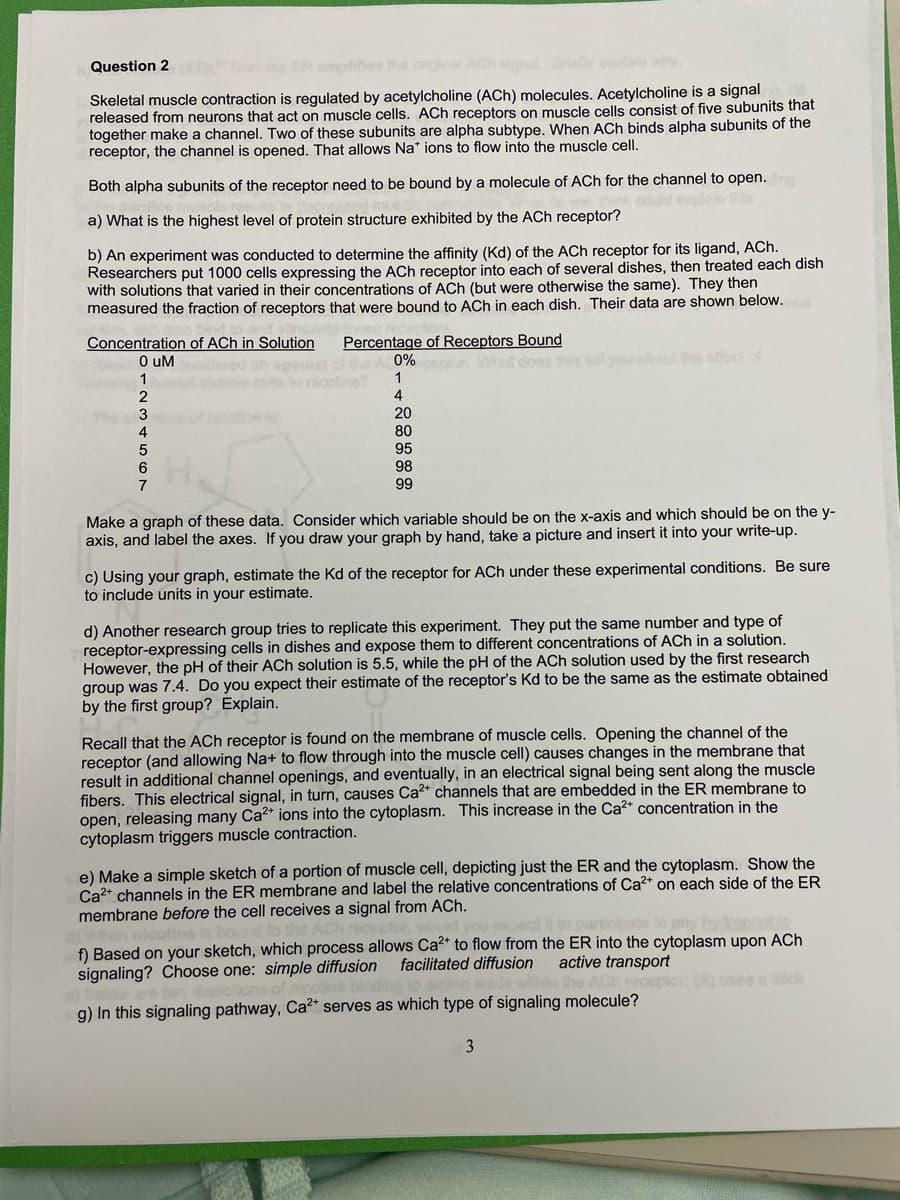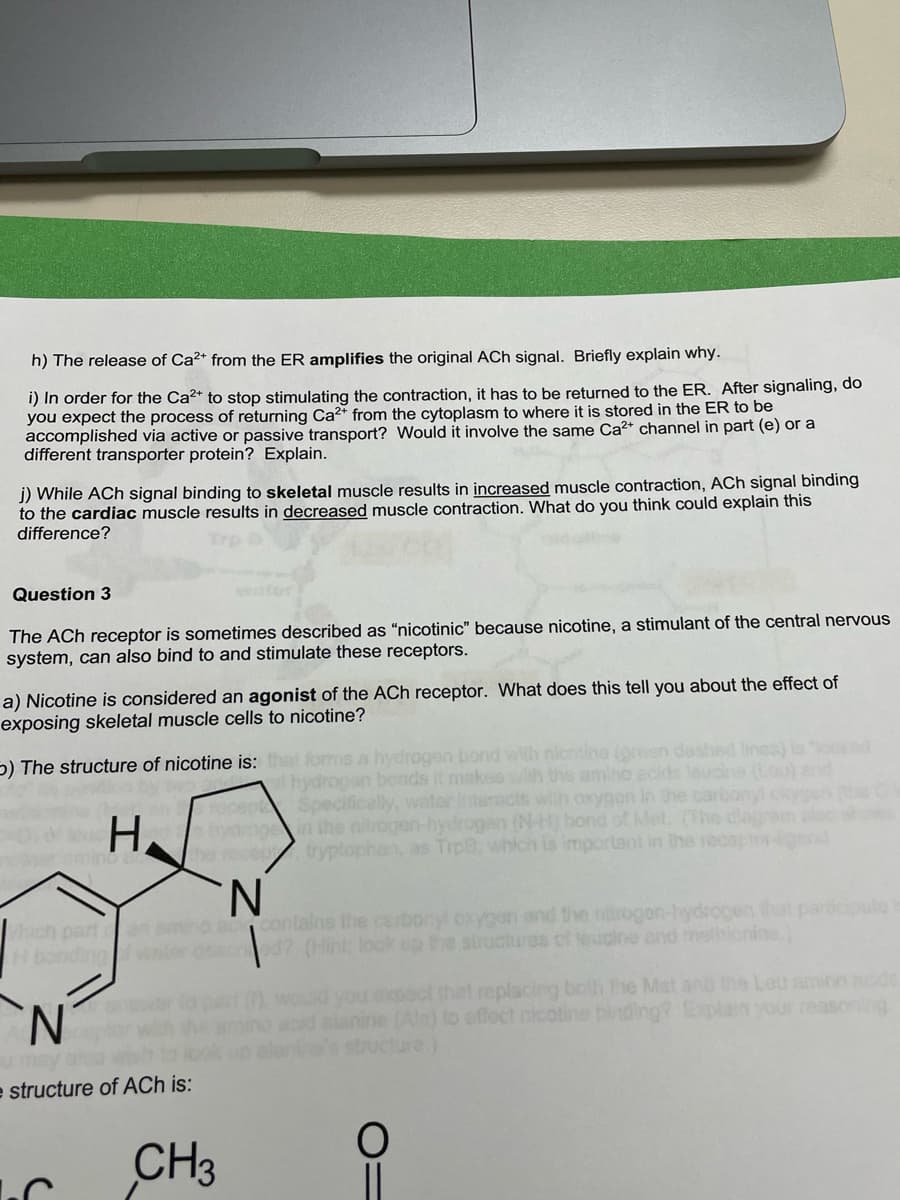a) What is the highest level of protein structure exhibited by the ACh receptor? b) An experiment was conducted to determine the affinity (Kd) of the ACh receptor for its ligand, ACh. Researchers put 1000 cells expressing the ACh receptor into each of several dishes, then treated each dish with solutions that varied in their concentrations of ACh (but were otherwise the same). They then measured the fraction of receptors that were bound to ACh in each dish. Their data are shown below. Concentration of ACh in Solution 0 UM 1234567 7 Percentage of Receptors Bound A 0% 1 4 nicotine? 20 80 95 98 99 Make a graph of these data. Consider which variable should be on the x-axis and which should be on the y- axis, and label the axes. If you draw your graph by hand, take a picture and insert it into your write-up.
Nucleotides
It is an organic molecule made up of three basic components- a nitrogenous base, phosphate,and pentose sugar. The nucleotides are important for metabolic reactions andthe formation of DNA (deoxyribonucleic acid) and RNA (ribonucleic acid).
Nucleic Acids
Nucleic acids are essential biomolecules present in prokaryotic and eukaryotic cells and viruses. They carry the genetic information for the synthesis of proteins and cellular replication. The nucleic acids are of two types: deoxyribonucleic acid (DNA) and ribonucleic acid (RNA). The structure of all proteins and ultimately every biomolecule and cellular component is a product of information encoded in the sequence of nucleic acids. Parts of a DNA molecule containing the information needed to synthesize a protein or an RNA are genes. Nucleic acids can store and transmit genetic information from one generation to the next, fundamental to any life form.


Step by step
Solved in 3 steps with 1 images









